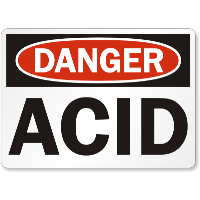Senator Boxer Wants L.A. Oil Field that Sickened EPA Officers Shut Down

For years, residents living in a low-income neighborhood between downtown Los Angeles and the University of Southern California (USC) didn’t get much satisfaction when they complained of headaches, nosebleeds, sore throats and odd smells after five dormant oil wells were reanimated using a controversial drilling process called acidization.
Their complaints got a little more traction last month when officers of the U.S. Environmental Protection Agency (EPA) suffered the same symptoms after touring the area, and Senator Barbara Boxer (D-California) asked that drilling operations be suspended.
EPA regional administrator Jared Blumenfeld told the Los Angeles Times his group suffered “severe” reactions to their walking tour that lasted for hours. “I've been to oil and gas production facilities throughout the region, but I've never had an experience like that before,” Blumenfeld said.
Last Friday, Boxer called for suspension of operations at the oil field pending an investigation by the EPA. The property is owned by the Roman Catholic Archdiocese of Los Angeles and leased to operattor Allenco Energy Co. Boxer told the Times that EPA investigators told her that they found a “shoddy” operation with oil on the ground and jerry-rigged wooden supports for pipes.
Allenco shut down the wells in 1999 after a years of service when market prices and oil dissipation made it unprofitable to continue, according to the U.S. Department of Energy. But technology advances, including hydraulic fracturing (fracking) and acidization, made the site profitable again. Production increased 400% between 2009 and 2010, according to the state.
That was about the same time neighborhood complaints skyrocketed. The South Coast Air Quality Management District (AQMD) received 251 complaints over a three-year period and issued 15 citations to Allenco for various violations. But the official word was that no major problems were detected at the site.
The drillers use a combination of “chemically modified hydrochloric acid” and phosphoric acid. The Energy Department seems a little uncertain (pdf) about what happens next. “The phosphoric acid in this formulation apparently reacts with aluminum in clays and feldspars to form a temporary protective film, which then allows a deeper penetration and more effective treatment.”
A department profile of Allenco’s project has only good things to say about “acid stimulation” in its Benefits/Impacts section, but the process has its critics. Although fracking has received most of the public attention, rock melting acid jobs are just as unmonitored and unregulated, and potentially more dangerous.
The AQMD gave the site a clean bill of health when it investigated complaints in 2011 and again more recently. EPA officials told the Times the symptoms described were consistent with exposure to hydrogen sulfide, the colorless flammable gas that occurs naturally in oil.
A Times reporter noted a sign inside the drilling compound a few months ago that read, “Danger: H2S. Poisonous Gas.” H2S is hydrogen sulfide. There was no similar sign outside the walls.
–Ken Broder
To Learn More:
EPA Officers Sickened by Fumes at South L.A. Oil Field (by Louis Sahagun, Los Angeles Times)
Think Fracking Is Bad? Wait Until You Hear about the Gas Industry's “Acid Jobs” (by Jacob Chamberlain, Common Dreams)
South L.A. Residents Are Sick of Oil-Drilling, Acid-Job Neighbors (by Ken Broder, AllGov California)
- Top Stories
- Controversies
- Where is the Money Going?
- California and the Nation
- Appointments and Resignations
- Unusual News
- Latest News
- California Forbids U.S. Immigration Agents from Pretending to be Police
- California Lawmakers Urged to Strip “Self-Dealing” Tax Board of Its Duties
- Big Oil’s Grip on California
- Santa Cruz Police See Homeland Security Betrayal in Use of Gang Roundup as Cover for Immigration Raid
- Oil Companies Face Deadline to Stop Polluting California Groundwater





